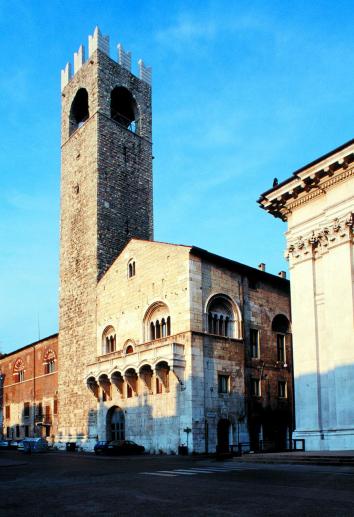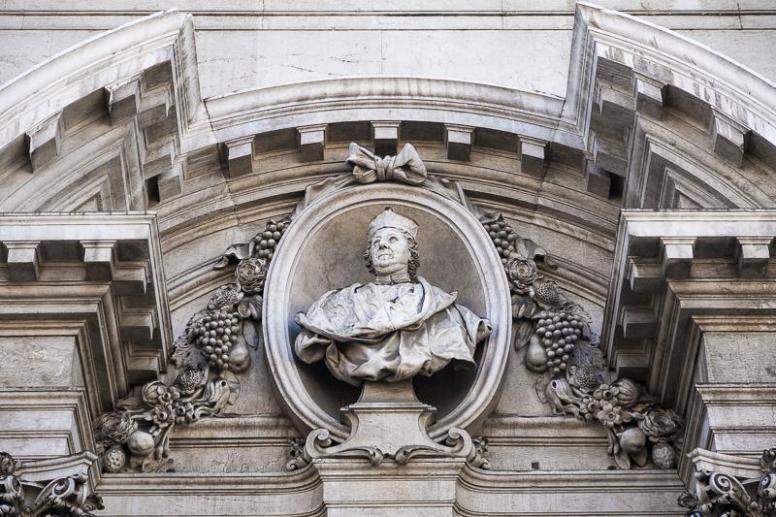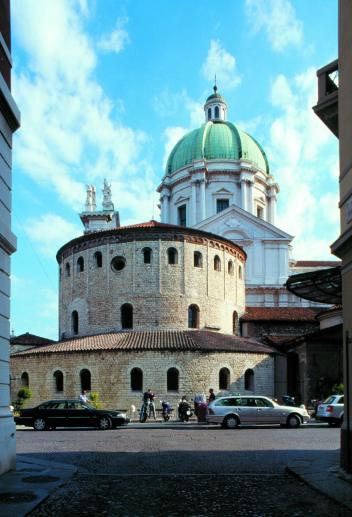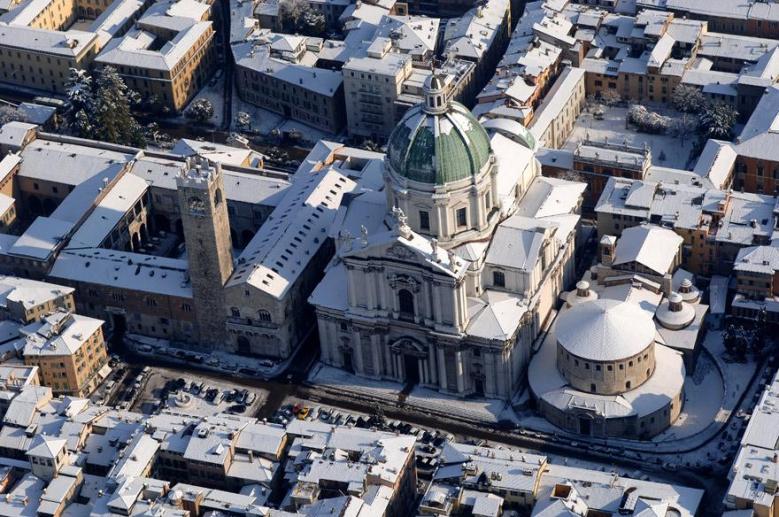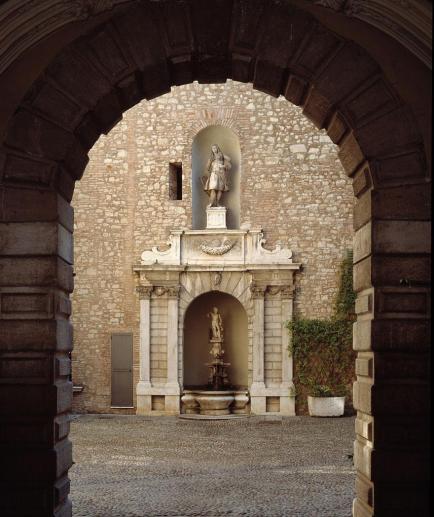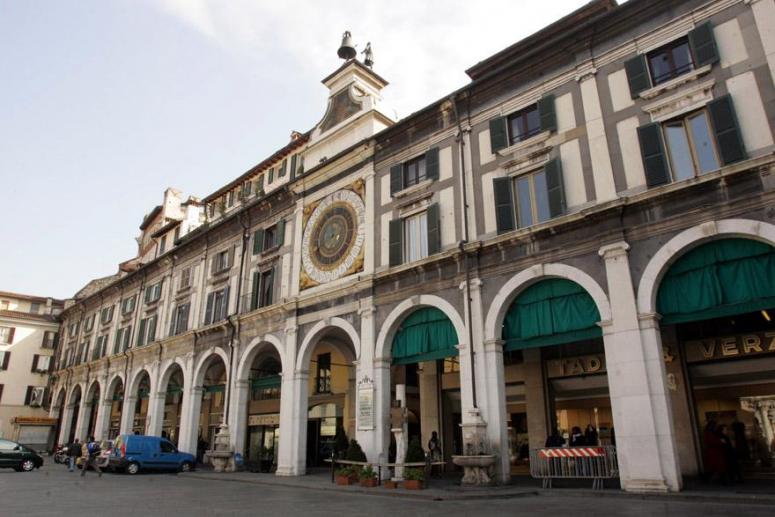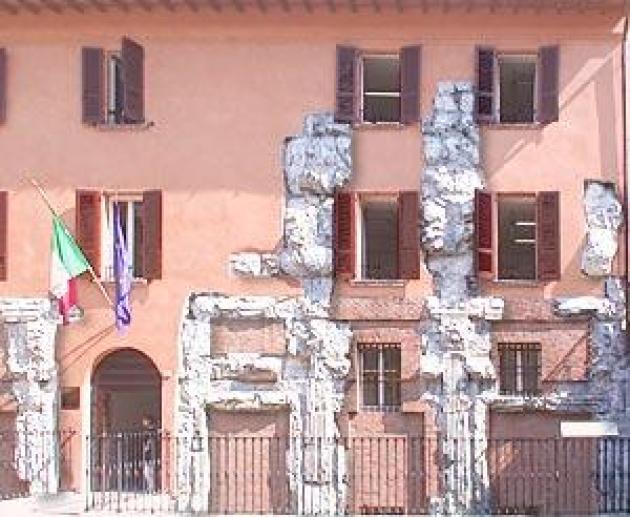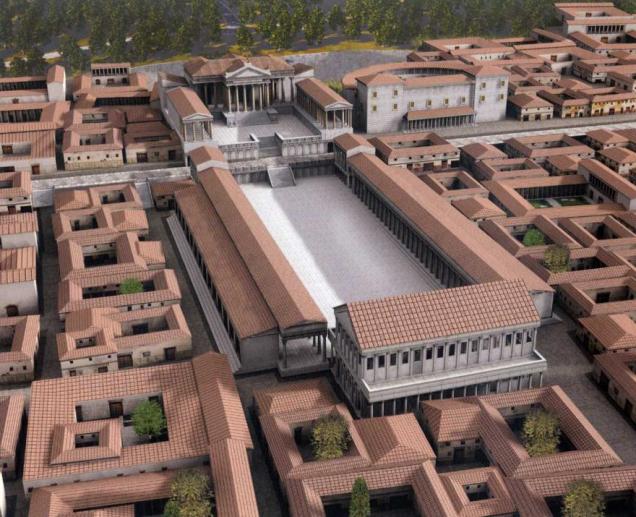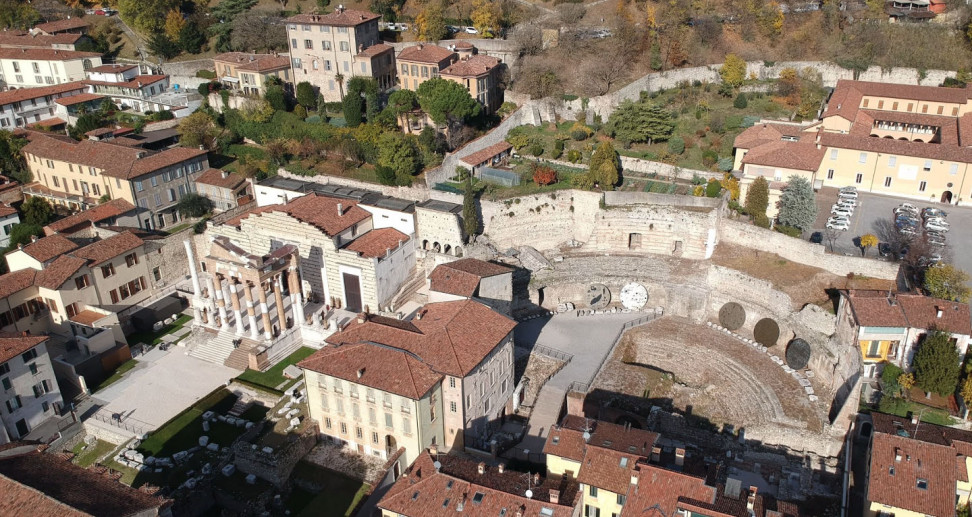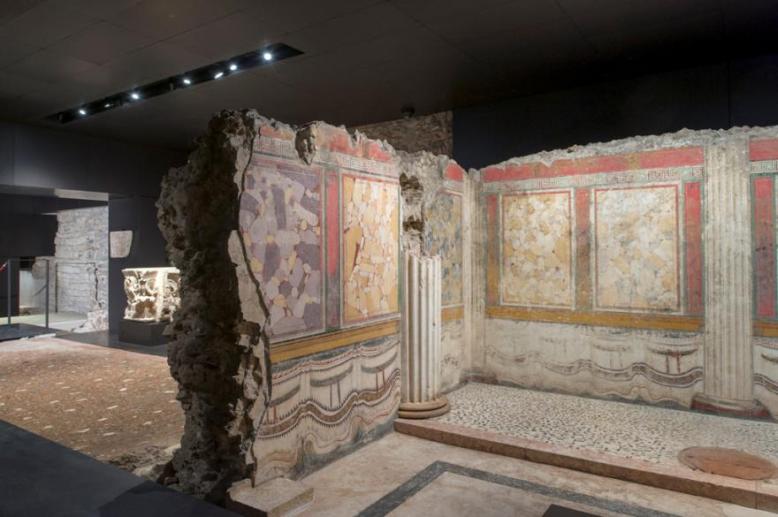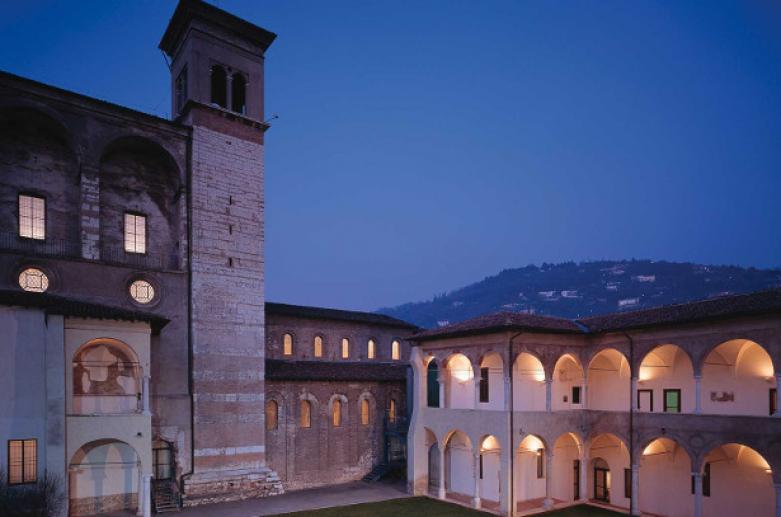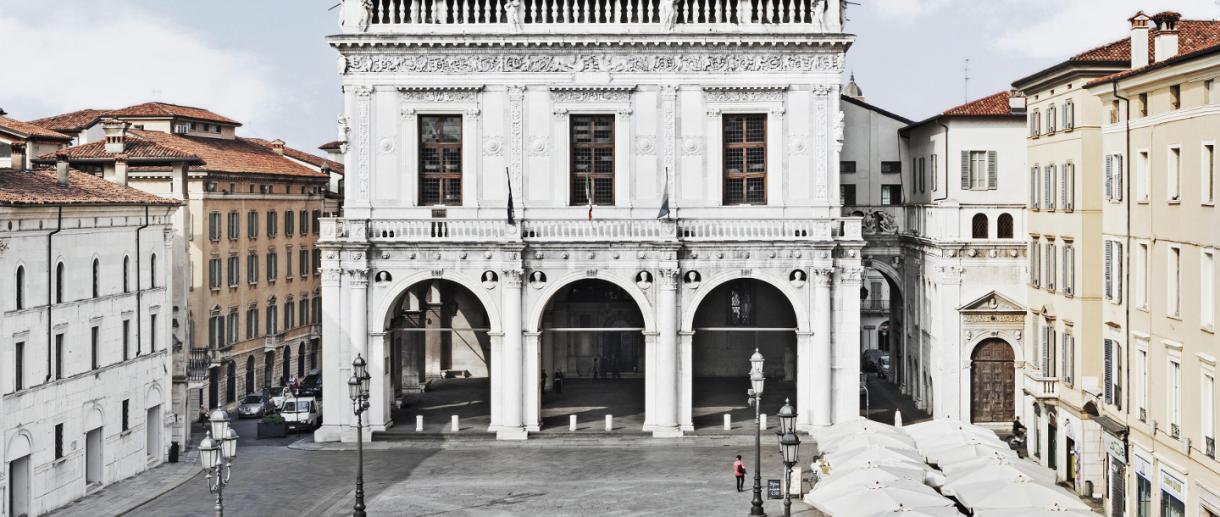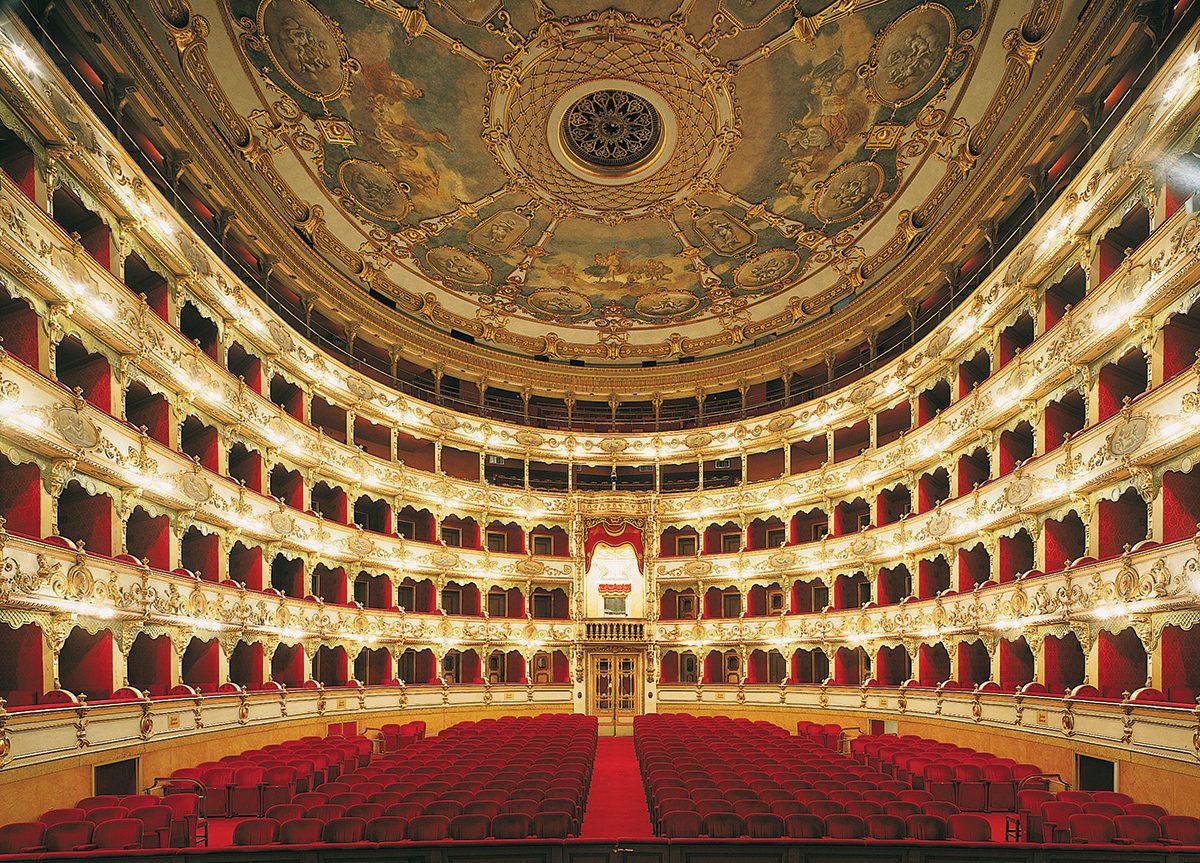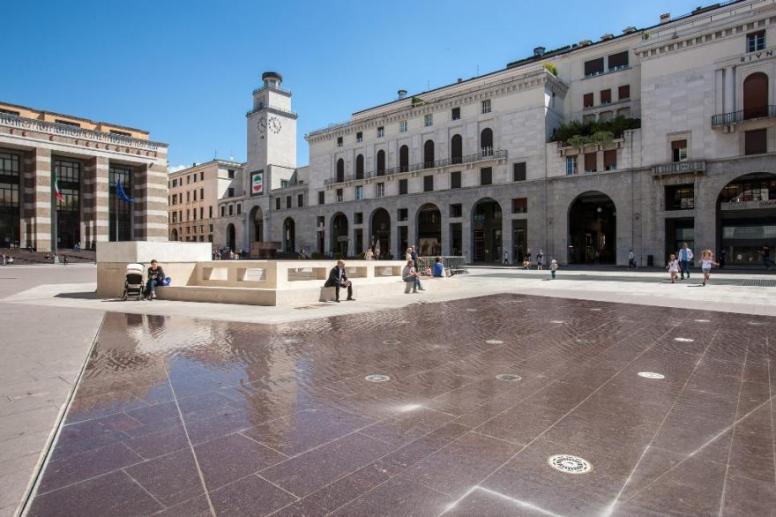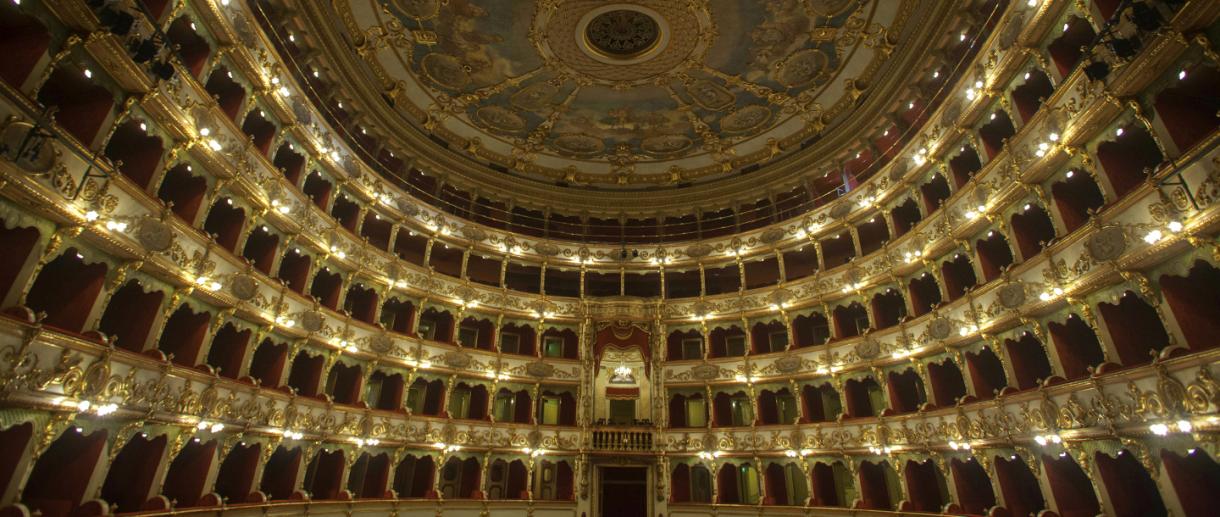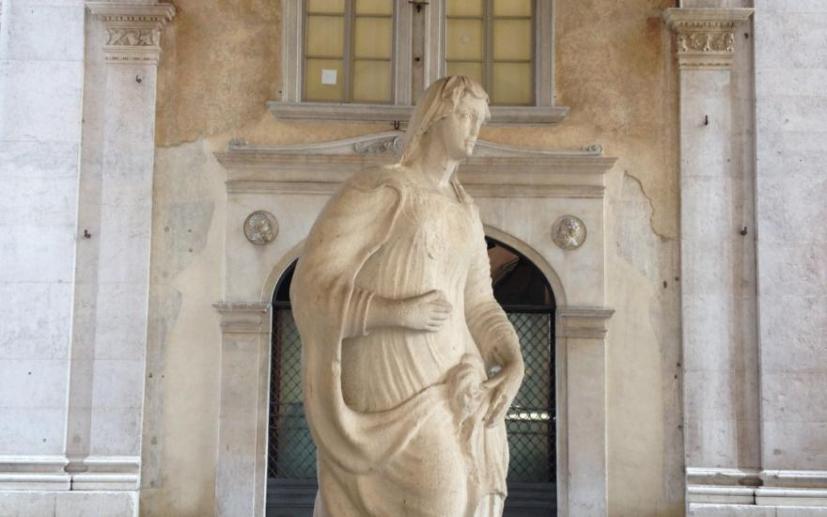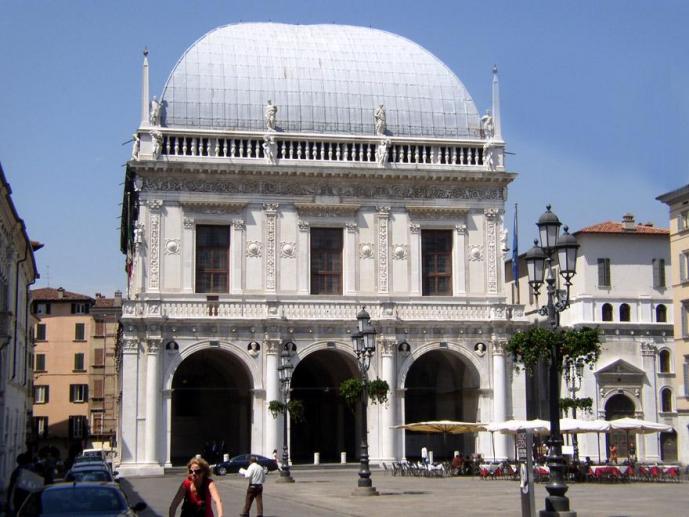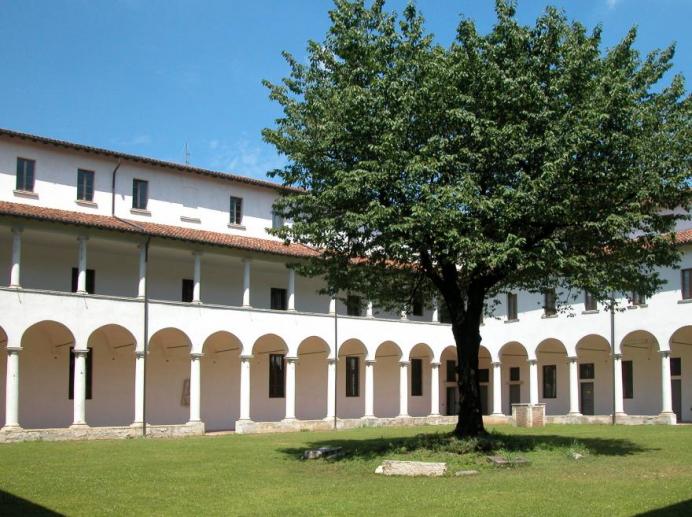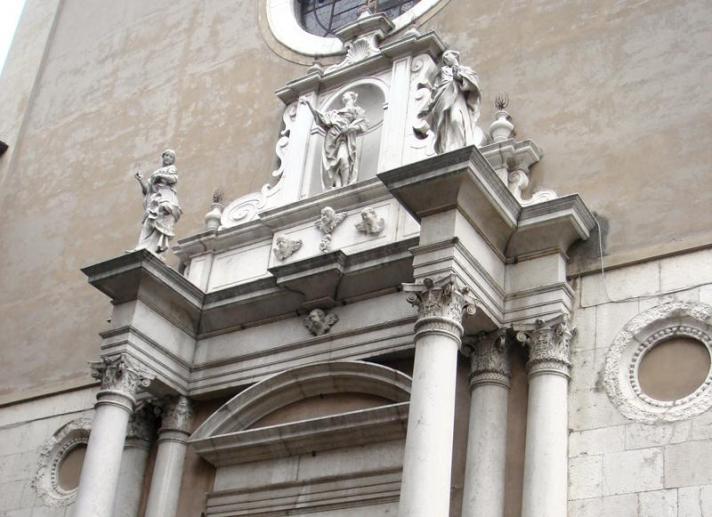- Art & Culture
The Queriniana Library and the Bishop's Palace
The Queriniana library was founded in 1747 and opened to the public by Cardinal Angelo Maria Querini, formerly librarian at the Vatican library, well known for his bibliophily.
He had the monumental palace designed and built by the architect Marchetti and donated his remarkable private bibliographic collections, legating a considerable sum to enable the library to expand in the future. Before dying he passed the administration of the whole facility to the town council, which has been responsible for the service ever since, apart from a short interval at the end of the eighteenth century.
In time, the funds of the library have been considerably increased, in particular after the suppression of monasteries by Napoleon and as a consequence of private donations. During the second world war the building was hit by a bomb, which caused the loss of parts of the collections as well as the reorganization of the palace as a whole. The section open to the public includes, first of all, a large entrance hall at the top of a monumental staircase.
The hall is decorated with frescoes painted by Albrizzi and Scotti, surrounding the bust of the founder sculptured by Callegari. Noteworthy are the medaillons on the walls divided by stuccoes showing some episodes of Cardinal Querini's life. The main reading room as well as the smaller ones are decorated with frescoes painted in the XVIII century and their furniture go back to the same period.
The library is well known for its ancient funds including a vast amount of ancient manuscripts, some of them richly illuminated. It is worth mentioning a few, such as The purple gospel of the IX century, the evangelical harmonies by Eusebius of the X century,fragments by Saint Cyprian of the V century, an illuminated English psalter of the XIII century as well as a collection of fascicles forming a valuable edition of Koran going back to the XV century.
The ancient fund can boast of a good collection of printed books too, including a large section of incunabula as well as editions of the XVI century. Among other things it is well worth mentioning an edition of Dante's comedy edited by Bonini and decorated with full-page xilographies, the "Book of embroideries" and the splendid edition of Petrarca's rhymes each page of which surprises for the high quality of their miniatures.
The Bishop's Palace is built in one with the library and they have a common garden overlooking Piazzetta Vescovado, divided by a railing put up in 1737. The garden has a fountain in the middle with a multi-foiled basin and is on a line with the XVIII one under the portico of the library, adjacent to Via Cattaneo, which has two rectangular basins - one was used as a drinking-trough and the other as a public washing-trough.
The palace, which has a distinctive and majestic main door in Tuscan style, was built in the XV century and then altered and rebuilt more than once. It owes its simple and solid style to the contributions of Pier Maria Bagnadore and Giovanni Maria Piantavigna.
